Caves 🢔 Geological wonders 🢔 Categories of wonders
Wonder
Veryovkina Cave
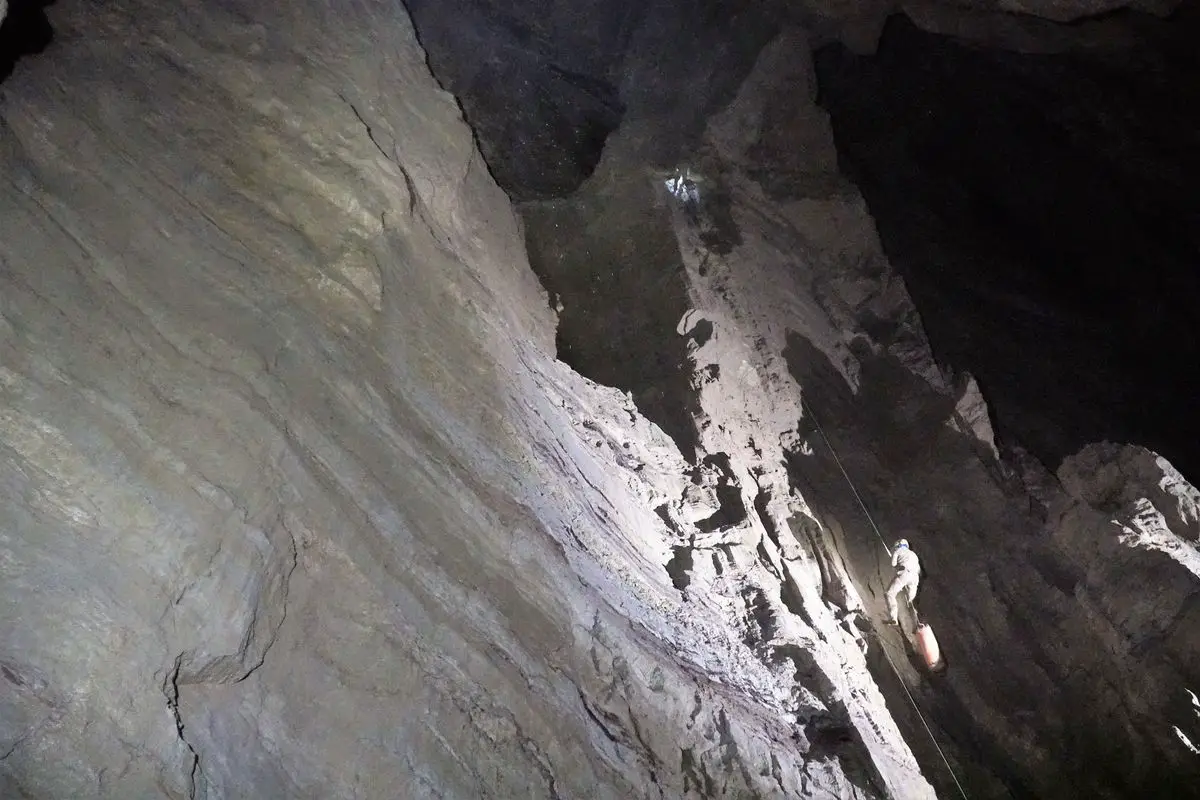
 In short
In short
Since March 2018 the deepest known cave in the world is Veryovkina Cave. Its depth is 2 212 m – 15 m more than the previous record-holder, Krubera Cave which is only some 5 kilometres to the southeast.
 53.8%
53.8%
GPS coordinates
Location, address
Name in regional languages
Length
Depth
Map of the site
If you see this after your page is loaded completely, leafletJS files are missing.
 In detail
In detail
History
Arabika Massif in the Greater Caucasus is a remarkable limestone massif with more than 2 kilometers thick layer of the Upper Jurassic and Lower Cretaceous limestone. This mountainous region is crisscrossed with caves including several of the world’s deepest known caves.
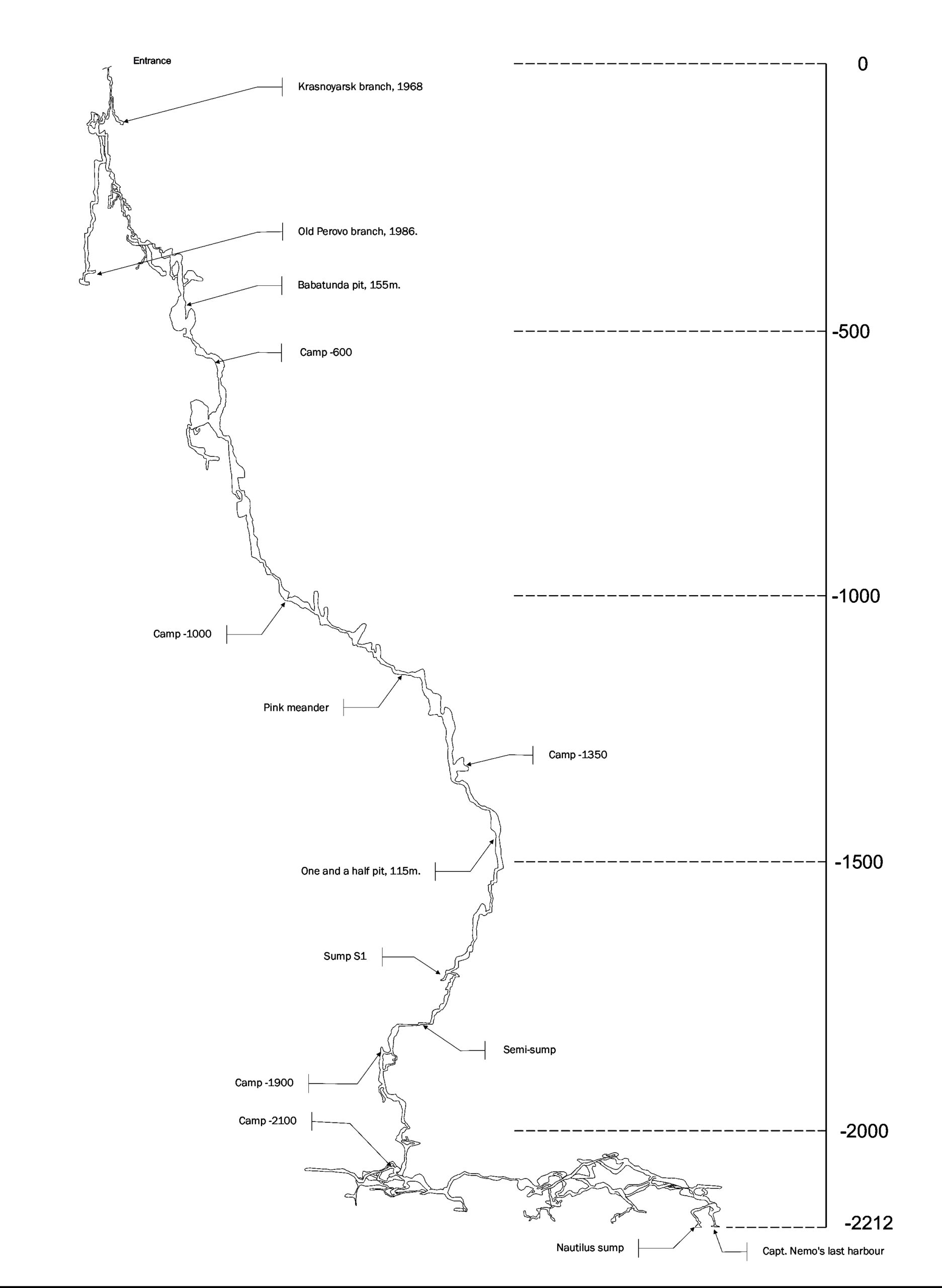
Entrance – a 3 by 4 m large hole – in Veryovkina Cave was noticed earlier but the first descent in it took place in 1968. An expedition of Krasnoyarsk speleologists then reached the depth of 115 m and the cave got its first code name – С-115.
There is a huge lot of caves in Arabika Massif to explore and for some decades C-115 was forgotten. Even the location of its entrance was lost until 1982 when it was marked under another name – П1-7 but no one entered it then.
In the next year – in 1983 – speleologists from Moscow, “Perovo” club, entered the semi-forgotten cave and one of them (Oleg Parfenov) noticed that a strong breeze is coming from a small fracture. It was extended and a new abyss was discovered. In it speleologists reached the depth of 120 m, and saw that cave extends further below.
Now speleologists became a lot more interested in the cave and returned to it repeatedly, each year. This was definitely a very dangerous and technically complex cave for explorers – but we can’t deny that true speleologists find much pleasure in the exploration of such caves. After much danger and some injuries in 1986, they reached the depth of 440 m – already then it was one of the deepest known caves in the world. In this same year, the cave got an official name: Veryovkina Cave. It was named after Alexander Veryovkin – a speleologist who died in 1983 in Su-Akan – another Caucasian cave.
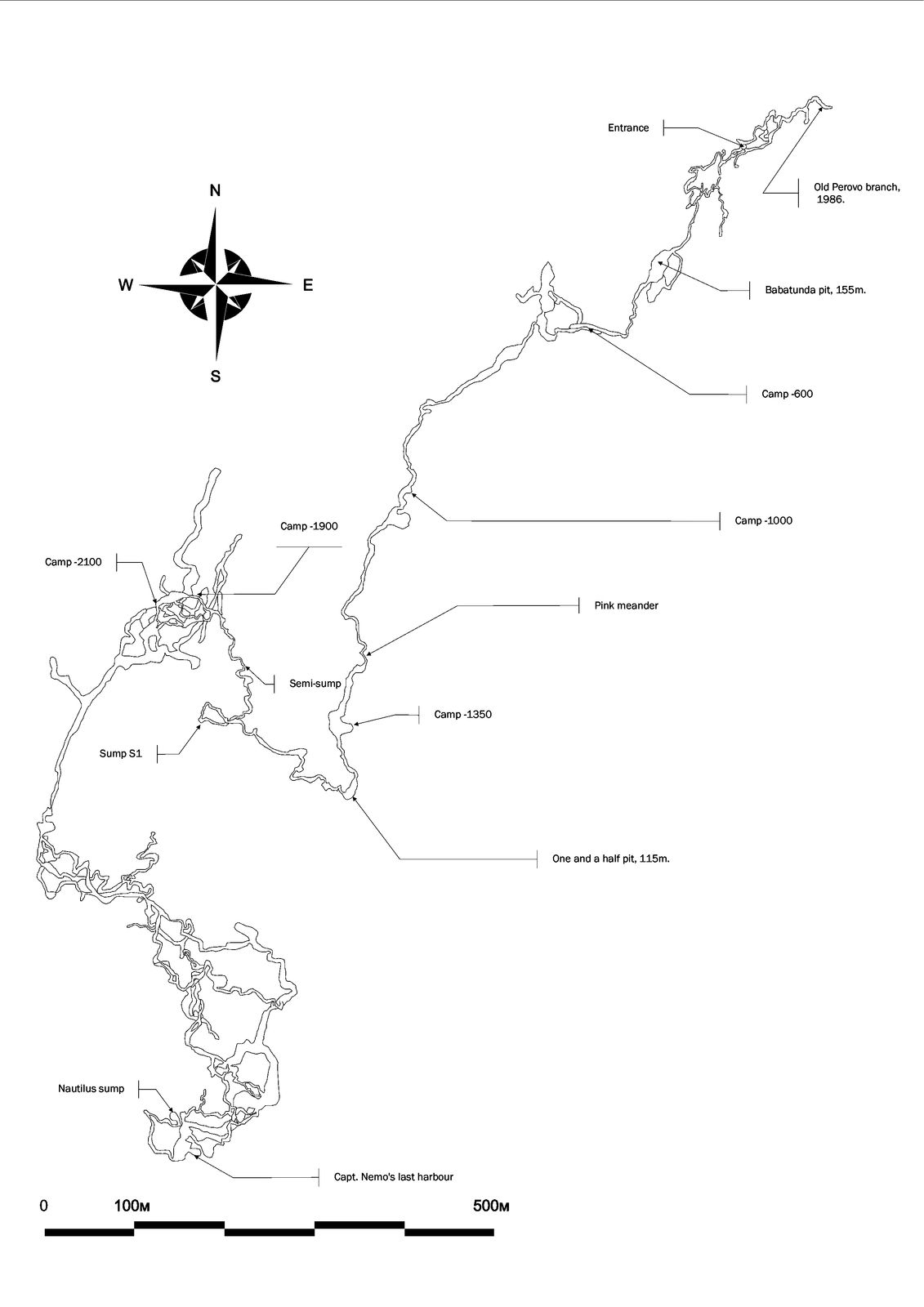
After 2000 the exploration of the cave was restarted by the same “Perovo” club – Arabika Massif since 1981 has been divided among several speleological clubs and “Perovo” then got the part with Veryovkina Cave. Cave was thoroughly mapped but only in 2015 was found the entrance to the next abyss. In 2016 was reached a depth of 1 350 m, in February 2017 – 1 832 m. Now it was the second deepest cave in the world. In August 2017 the expected sensation happened: after long years of hard and risky work speleologists reached the world-record depth of 2 204 m.
In March 2018 the next expedition measured the depth of the lake (with the romantic name the Last Camp of Nemo) on the bottom of the deepest shaft – thus adding 8.5 m and achieving the depth of 2 212 m.
Description
The entrance to the world’s deepest cave is not too impressive – a 3 by 4 m large hole in the limestone of Arabika Massif.
This hole is 32 meters deep – more than enough to prevent occasional people from entering it.
But this is just a small preface. Further inside the descent in Veryovkoina Cave becomes an extreme feat requiring the very best speleological skills and a trivial fearlessness. Abyss follows an abyss and the most extreme is the 155 m deep Batabunda Well (seen on the main image of this article).
Very interesting feature of the cave is that until the depth of some 2 kilometers, it is a vertical cave but at the extreme depth under the 2 kilometers it turns into a network of more or less horizontal pathways.
This enormous cave is not lifeless. Up to now (2022) have been collected 15 species of invertebrates but there, most likely, are more. Among these creatures is a leech belonging to the Dina genus – most likely an endemic species living only in the deepest caves of Arabika Massif. Also other creatures – pseudoscorpions, amphipods, daddy longlegs, spiders, ticks, centipedes – belong to very rare species that are found only in some more nearby caves.
Some species are even unique to Veryovkina Cave. At least one species – a shrimp Xiphocaridinella demidovi is new to science and thus far found only in this cave, exactly in the deepest place of the cave – in the Last Camp of Nemo lake. This species is named after Pavel Demidov, researcher of Veryovkina Cave who deceased in 2020 in another cave nearby. This is a tragic reminder about the extreme nature of the exploration of these dangerous caves.
Biological exploration of the invertebrates of Veryovkina Cave continues.
References
- ОТКРЫТИЕ И ИСТОРИЯ ИССЛЕДОВАНИЯ ПЕЩЕРЫ им. А. Веревкина (1968-1986 г.), incave.org, 12 November 2016. Accessed in 5 February 2022
- Turbanov I.S., Demidov P.E., Kolesnikov V.B. , Turbanova A.A. 2018. Preliminary results of investigation of invertebrate animals study in the Veryovkina Cave (The Western Caucasus, Abkhazia), Speleology and Spelestology. Collection of materials of IX International scientific conference. Naberezhnye Chelny: Nizhny Novgorod Pedagogical University Press, pp. 360-368. Accessed in 5 February 2022
 Linked articles
Linked articles
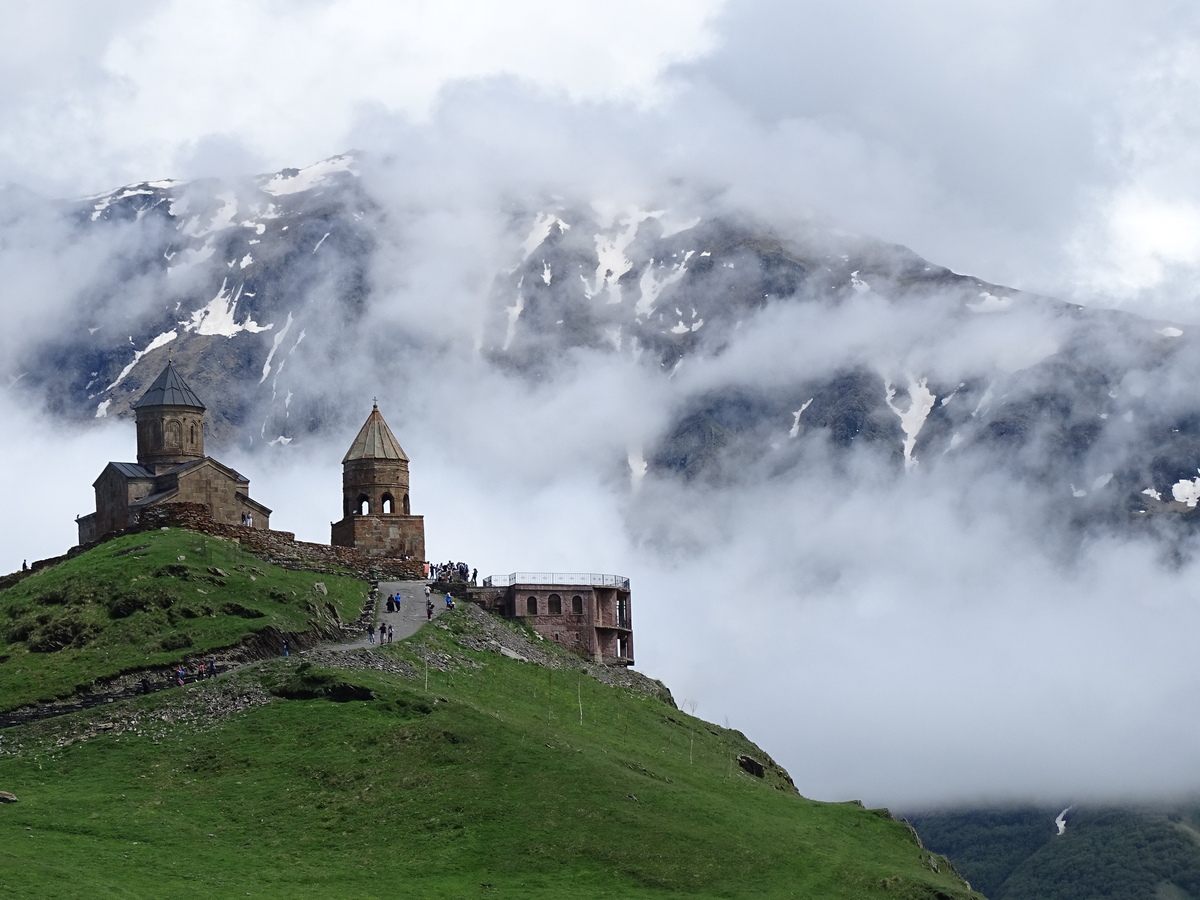
Wonders of Georgia
There are few small countries in the world with such a distinct culture and richness of natural and man-made landmarks as Georgia. Here evolved several distinct writing systems, own architectural styles, and art styles.
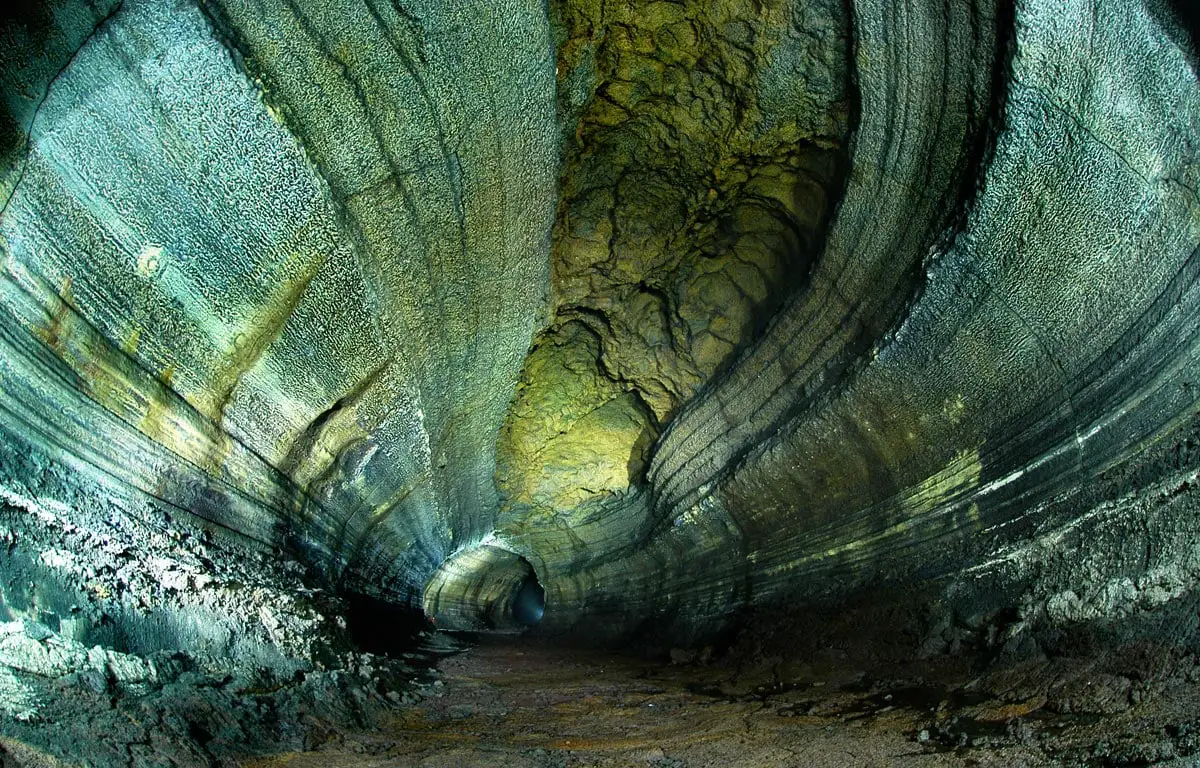
Caves
Every year there are reported exciting discoveries of new caves and discoveries of new qualities such as cave paintings in the ones known before. But there still is a feeling that our knowledge covers just a small part of all these monuments of nature.
Though, those which are known to us, offer a surprising diversity of unusual features and impressive sights.

Wonders of Asia
Any other continent (and part of the world) seems small if compared to Asia. This refers also to natural and man-made heritage: in Asia are not just thousands of great landmarks, there are found landmarks created by thousands of diverse cultures from ancient Phoenicians to the mysterious small people in the Philippines and eastern islands of Indonesia.
 Recommended books
Recommended books
100 of the Deepest Caves In the World
Are you looking for a journey that will take you through 100 of the Deepest Caves In the World, along with funny comments and a word puzzle? Then this book is for you. Whether you are looking at this book for curiosity, choices, options, or just for fun; this book fits any criteria. Creating 100 of the Deepest Caves In the World did not happen quickly.
Geomorphology of Georgia
This book is based on the results of several years of geomorphological studies and research in Georgia, published for the first time in English, and covers a gap in research in the field of world regional geomorphology.


